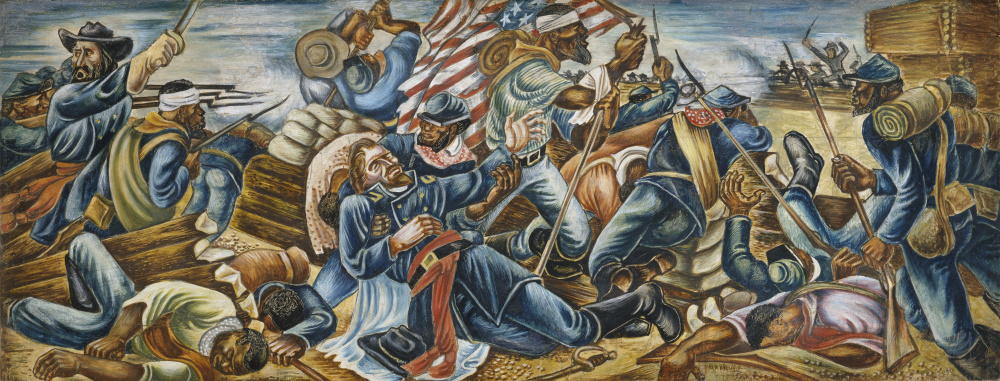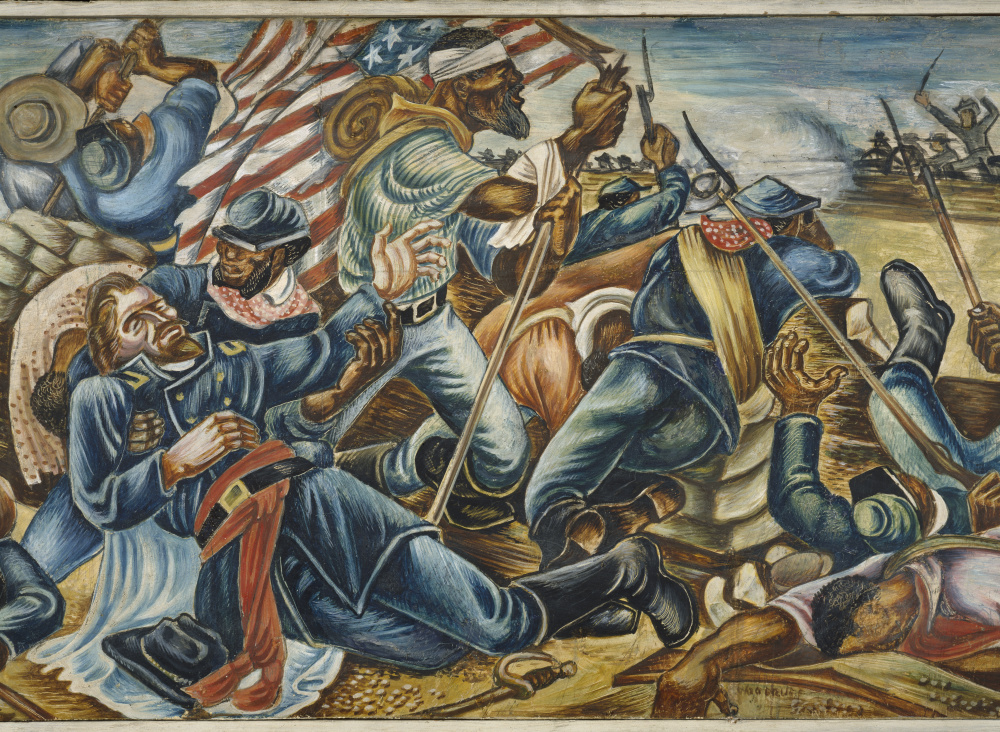- Open today, noon to 5 pm.
- Parking & Directions
- Free Admission
Commemorating Juneteenth
This week, Governor Ralph Northam declared Juneteenth a state holiday in Virginia. Celebrated on June 19, the day commemorates the end of slavery in the United States. Both a day of bittersweet remembrance and important celebration, Juneteenth dates back to 1865 and is a solemn reminder that humans can be incredibly cruel to each other. Although President Abraham Lincoln issued the Emancipation Proclamation in 1862, it did little to end slavery. Information about it was suppressed to forestall any major rebellions of the enslaved populations against their masters.[1] On April 9, 1865, Confederate General Robert E. Lee surrendered to Union General Ulysses S. Grant, ending the Civil War in the United States and ensuring the freedom of its entire enslaved population. However, that proclamation did not immediately reach every enslaved individual. In Texas, knowledge about the end of the war and freedom granted didn’t occur until June 19, 1865, more than two months later. Texas seceded from the Union with the rest of the Confederate states; however, there were very few incursions by Union soldiers. In fact, the institution of slavery continued with almost no interruptions, and many slave owners took their enslaved servants there to wait out the war.
When the enslaved population in Texas was notified about the end of the war and their freedom on June 19, 1865, the day became known as Juneteenth or Freedom Day to the freed African American populations of Texas and other southern states. It was a day of celebration for so many who had been denied their equality. Juneteenth was initially celebrated in eastern Texas and western Louisiana as those were the regions last to know about emancipation. Although the celebration grew to other states over the years, Juneteenth was not a recognized holiday until 1979 when it became a state holiday in Texas. Since then, many states have made it a holiday, though it is not federally recognized.[2]

Hale Aspacio Woodruff (American,1900-1980), Sergeant Carney and the Death of General Shaw, ca. 1942, Tempera on masonite, Gift of Mr. A. Ailon ©Estate of Hale Woodruff/ Licensed by VAGA, New York, 83.595
Although there is no imagery about Juneteenth in the Chrysler Museum’s collection, there is a work celebrating the African American struggle for freedom and equality. Sergeant Carney and the Death of General Shaw, a painting by African American artist Hale Woodruff (1900–1980), depicts the Battle of Fort Wagner in South Carolina during the Civil War. The artist highlights the fact that formerly enslaved and free African Americans participated in the war that gained them their freedom.
In Woodruff’s painting, Union soldiers fight against Confederate soldiers in the distance. The Union soldiers dominating the foreground are recognizable because of their blue-colored uniforms and American flag. Several of the Union soldiers are injured or deceased, while others march on. During the Civil War, the 54th Massachusetts Regiment—the war’s first regiment of African American soldiers, which was led by Robert Gould Shaw, a white soldier— fought against Confederate soldiers. The day the 54th Regiment stormed Fort Wagner, they suffered heavy casualties and ultimately did not triumph in overtaking it for two months. Yet, Woodruff’s painting depicts the soldiers’ bravery, sacrifice, and belief in freedom for everyone.

Hale Aspacio Woodruff (American,1900-1980), Sergeant Carney and the Death of General Shaw (detail), ca. 1942, Gift of Mr. A. Ailon ©Estate of Hale Woodruff/ Licensed by VAGA, New York, 83.595
The two individuals mentioned in the title are of particular note. Sergeant Carney stands holding the U.S. flag. He was a former slave born in Norfolk, Virginia. He witnessed another soldier fall. When the soldier dropped the U.S. flag, Sergeant Carney dropped his gun and picked up the flag to keep morale for his comrades. He also got troops back to safety when it was clear the Union was not going to win that day; he received a Medal of Honor for his bravery. General Shaw, shown dead in the hands of one man, died on the battlefield and was buried with his troops in a mass grave by the fort.[3]
To honor the holiday of Juneteenth, a significant moment in U.S. history, the Chrysler Museum acknowledges the centuries of trauma inflicted upon African Americans in this country by its own citizens. As we seek to achieve our aspirations for a better nation, we hope that everyone takes this day to remember the struggles African Americans have endured past and present to ensure a future of equality.
–Kimberli Gant, PhD, McKinnon Curator of Modern and Contemporary Art
[1] Charles Taylor, Juneteenth: A Celebration of Freedom. Greensboro: Open Hand Publishing, LLC, 2002: 3-4.
[2] Lynne Hamer, Geneva Chapman, and Lucy Thelma Osbourne, eds. Juneteenth: An American Holiday. Toledo, University of Toledo College of Education and Allied Professions, 1998: 5-6.
[3] Brian Pohanka, “Fort Wagner and the 54th Massachusetts Volunteer Infantry, “ American Battlefield Trust: https://www.battlefields.org/learn/articles/fort-wagner-and-54th-massachusetts-volunteer-infantry

